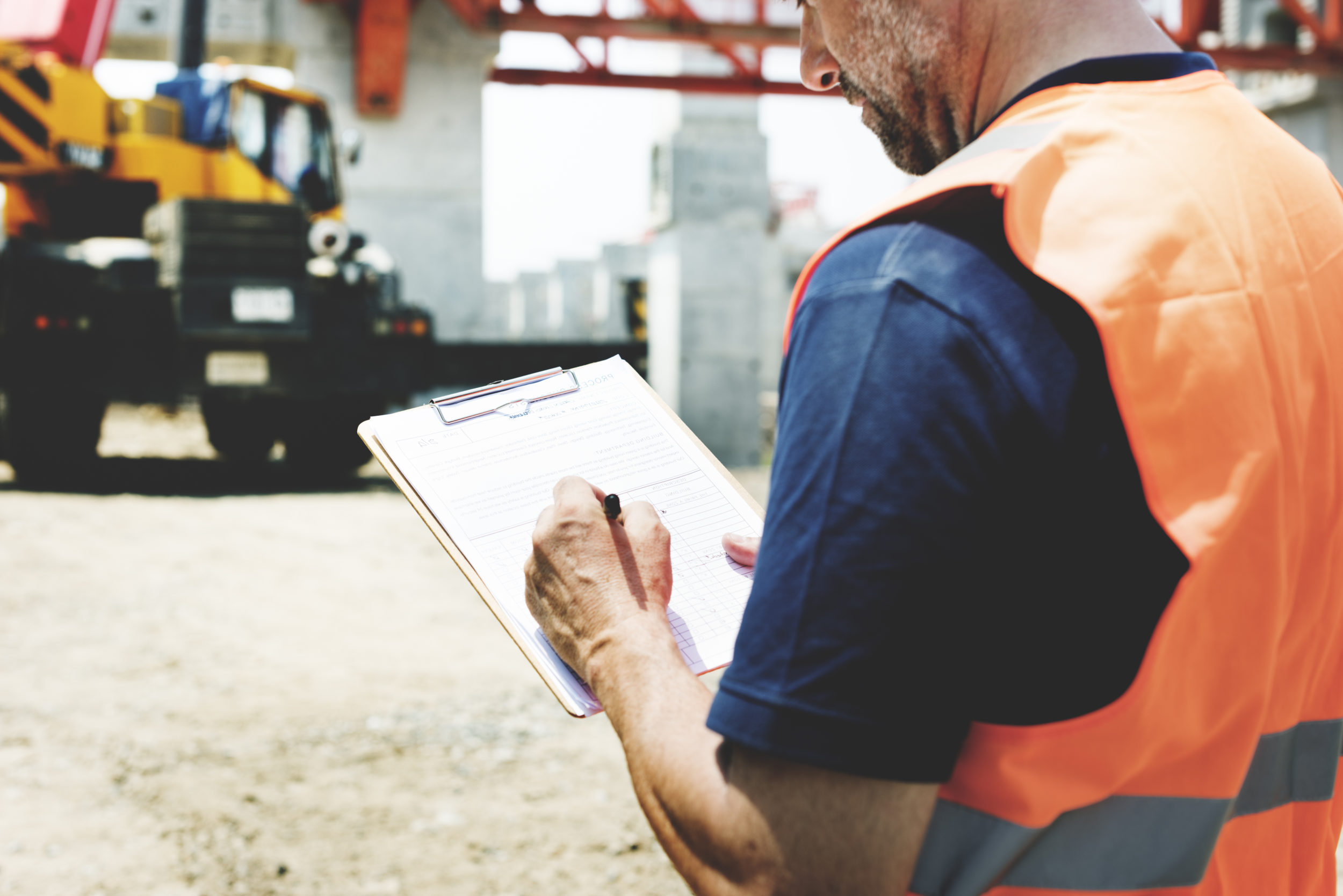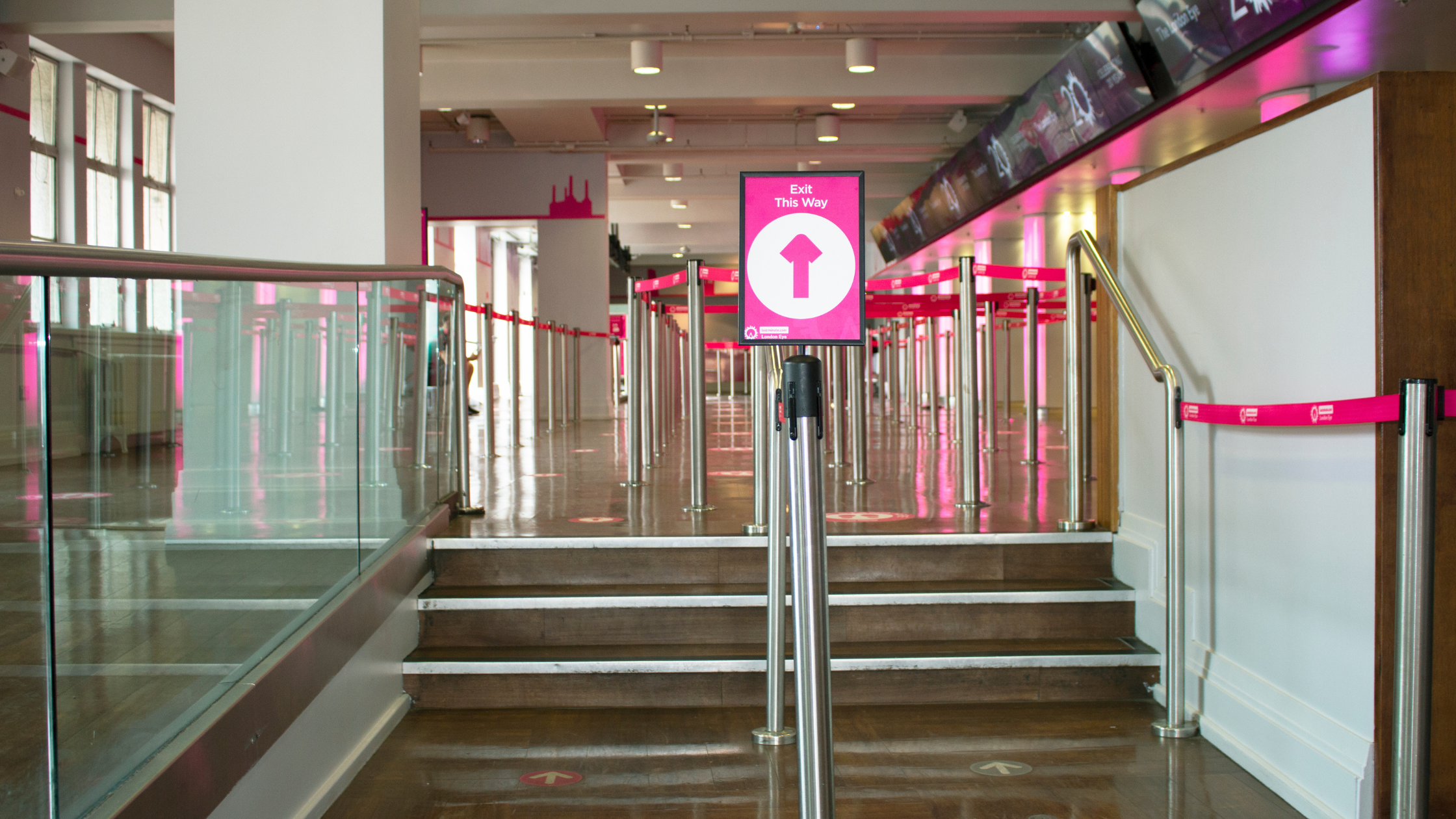- Home
- Sectors
- Solutions
- Tensabarrier®
- Tensamedia® Wayfinding and Signage
- Lawrence® Post & Rope
- Tensator® Airport Passenger Guidance System
- Electronic Queuing – eQ™
- Tensaguide® Modular Barrier System
- Tensator Micam Protection – TMP
- Safety Solutions
- Access Control
- In-Queue Merchandising
- Virtual Queuing – VQMS
- Tensator® Virtual Assistant
- Custom & Bespoke Solutions
- Resources
- About
- Contact Us
- Shop
 English (English)
English (English)
How to avoid the most common workplace safety issues
17
Sep

In 2017, the cost of accidents at work in the UK was a hefty £5.2 billion. Compare that figure to the costs resulting from employee ill-health (£9.7 billion) and you can see the size of the problem.
The Health and Safety Executive (HSE) measures the impact these workplace accidents have on companies such as yours in terms of healthcare bills and loss of productivity. For employers, there is the added risk of legal action in the age of ‘no win, no fee’ claims. That’s why it makes sense to get ahead on workplace safety, preventing accidents before they happen and staying in front of changing regulations.
Read on to learn about how your business can avoid workplace safety issues, plus products to help keep your workforce safe.
Which are the most common workplace safety issues and what are the solutions?
According to the HSE 2018 figures, the vast majority of non-fatal workplace accidents have familiar causes. Most common are trips, slips and falls from the same level (31%) and lifting and carrying injuries (21%). These are followed by being struck by a moving object (10%) and falls from a height (8%).
If you recognise any of these causes, you’re not alone. Plenty of companies aren’t taking adequate workplace safety precautions, leaving themselves open to legal costs as well as risking employee safety and their own reputations.
Avoiding common workplace hazards and accidents basically boils down to three factors: access, communication and protecting physical assets. So what does this look like in practice?
1) Block off dangers, demarcate safe areas
The most effective way to prevent workplace accidents is often simply to restrict access. Sometimes an area will be off-limits to all; at other times, it’s restricted to trained staff with experience in that work area. In some workplaces, you’ll also need to mark out the safe zones where employees should stay when they work or move around the floor.
A good example is open pits, as in the automotive industry. A trip or fall in an environment like this could be life-changing, so a physical (and visual) ‘roadblock’ is essential.
Workplace safety solutions:
Our flexible pit protection solutions are designed for depots and workshops. They’re approved by the HSE, so you satisfy safety regulations. They’re also compliant with regulations for working at height. There are a variety of options to suit your space, with good visibility and safe entrances and exits.
A non-permanent alternative is our TensaconeⓇ Topper. The innovative topper is a quick and easy way to restrict access to unsafe areas, by transforming a standard road traffic cone into a highly effective barrier. Four-way connectivity means you’re not limited to only making one shape with the cordon you set up.
TensabarrierⓇ is the safest retractable barrier on the market. Its unique braking system avoids injury to bystanders if the webbing is accidentally detached. The base has the lowest leading edge on the market, helping you make your workplace more accessible to all. That includes wheelchair users, the visually impaired and those wheeling trolleys, etc.
This high-quality product is stable yet lightweight and easy to assemble. It’s also available in a wide variety of models to fit your needs, including Outdoor posts and a Heavy Duty post. Our quick-assembly Stowaway posts pack away into a compact carry bag (for up to 50 posts). They’re available in eye-catching colours (often offering you a choice of colour).
Find out more about our range of safe working environment solutions.
2) Communicate
The value of communication can never be underestimated! When you see someone doing something unwise or dangerous, it can be easy to forget that they simply might not know the risk they’re taking. Back up your physical solutions with adequate signage and training. Above all, remember your legal responsibility to communicate risks to staff.
When assessing a potentially risky area, ask yourself these questions:
-
Is there something visual to alert workers to the danger?
Does it need to prevent access at the same time as it attracts attention, e.g. a brightly coloured cordon?
-
Is an explanation needed, e.g. a text sign or a diagram?
You can order custom webbing for TensabarrierⓇ to display your warning or other message.
-
Is the sign at the most appropriate height to work effectively?
Are your signage holders adjustable? Our telescopic post (with sign holder on top) lets you adjust the height.
-
If using signs, is a sign placed on one side of the hazard sufficient, or could workers approach from either side?
-
Are signs placed at sufficient frequency?
Warnings and notices should be eye-catching, but they should also be well-placed. If a worker doesn’t need to pass by a sign located metres from a hazard, he or she might never see it. Therefore, it’s not doing its job.
3) Take a close look at your location and facilities
Accidents do happen, even if we sometimes want to pretend otherwise! Rather than hoping for the best, it’s a good idea to invest in the right protection for your staff, buildings and assets. Staying compliant with regulations will also help you protect your business.
Workplace safety solutions:
-
Impact protection
Remember that HSE statistic that says the third most common cause of accident is strikes by moving objects? Tensator supply a PVC impact protection range (bollards and barriers to rack, wall and column protectors) as this material performs better than metal. As it flexes on impact, it won’t damage the surrounding flooring, stock or equipment. It also requires less maintenance, which can save you up to 97% on the costs of repairs and replacements when compared to metal products.
Watch this video to see more reasons PVC is ideal for impact protection.
-
Modular handrails
As of 2000, UK Building Regulations state that handrails must be ‘slip-resistant and not cold to the touch’. Our unique, high-quality handrails are made of metal with a ‘warm to the touch’ PVC coating. It’s a strong, durable solution that can also be installed quickly and easily.
Handrails aren’t just to prevent falls on the stairs but can also improve safety on ramps and walkways and can act as a cordon. Connection points are internal, so there are no snag points. A choice of colours makes them attractive yet visible.
It’s easy to make your workplace safer
Failing to prevent a workplace accident could prove expensive, but with adequate planning and foresight it’s possible to significantly reduce the risks across your workplace.
Invest in high-quality, fit-for-purpose solutions that will last and which are visible, durable and well-designed. You also need to make sure you communicate dangers to your employees, with adequate levels of signage and training. You need to protect workers “from anything that may cause harm,” so prevent trips, falls and collisions. Finally, address your physical assets – both to protect facilities and stock and to stop them from hurting an employee.
Every workplace is different, so if you have questions about ways you could make yours safer, get in touch. We provide a bespoke consultancy to meet each individual company’s needs.
Download our brochure for more ways to avoid workplace safety issues and to explore our Health & Safety products.




